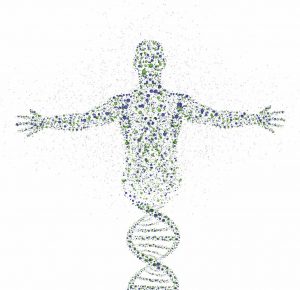 From Pokémon to the Marie Kondo decluttering craze, Japanese culture quickly crosses the Pacific. Costly funerals for furry friends could be next.
From Pokémon to the Marie Kondo decluttering craze, Japanese culture quickly crosses the Pacific. Costly funerals for furry friends could be next.
What’s Next For:
Revolutions?
Syria?
Mexico?
Japan?
The United States?
Earthquake Safety?
Climate Action?
California Water?
Climate Science?
Solar Energy?
California Fruit Farming?
Technology Investing?
Nanoscience?
Digital Storage?
Artificial Intelligence?
Cyber-Threats?
Social Media?
Space Exploration?
Science Museums?
The Sagehen?
Biodiversity?
The Blind?
Big Data?
Mental Illness?
Health Care Apps?
Maternity Care?
Etiquette?
Ballroom Dance?
Thrill Seekers?
Outdoor Recreation?
Funerals?
Writers?
Movies?
Manga?
Alt Rock?
Women in Mathematics?
In Japan, mourners attend services for dogs, cats, even hamsters or birds, sitting solemnly during ceremonies officiated by Buddhist priests. Cremated remains are buried in vast pet cemeteries or stored in mausoleums that look like huge stacks of school cubbyholes, filled with flowers or small offerings of food for the afterlife. Granite markers abound, along with signs with words such as “amour,” “never forget,” and “love hurts” in various languages.
“This is big money. Somebody’s spending thousands,” says Pomona College Sociology Professor Jill Grigsby, who has conducted research on family life and animals in Japan while teaching in the Associated Kyoto Program, a joint effort of Pomona and a group of other colleges.
In the past, Japanese pets might have been buried in a yard, Grigsby says. “Now, many fewer people live in single-family homes.” Another factor might be the Japanese reverence for ceremonies.
Demographics may play a role as well. “Part of my explanation is that when you have very low fertility—and right now in the United States we’re experiencing extremely low fertility, and Japan has one of the lowest fertility rates of any country; so does Korea. People still want to create families; so they think of other ways of putting families together, which means friends, but also pets.”
Pet cemeteries exist in the U.S., but not so much formal funerals. Yet the family as it sees itself is sometimes depicted in stick figures on the back of an SUV: Mom, Dad, two kids and sometimes a dog and cat. “Animals really are members of the family,” Grigsby says.
 Move over Bear Grylls. Make way Ron Swanson. Take a back seat Naked and Afraid.
Move over Bear Grylls. Make way Ron Swanson. Take a back seat Naked and Afraid. When Evel Knievel tried to jump the Snake River Canyon in 1974, stunts were kind of an oddity. “Now, that’s every Red Bull commercial,” says Grayson Schaffer ’01, editor at large at Outside Magazine and a co-founder at the production company Talweg Creative. After all, he points out, when the public has seen it all, the only way to grab the limelight is to up the ante, usually with a brand paying the way.
When Evel Knievel tried to jump the Snake River Canyon in 1974, stunts were kind of an oddity. “Now, that’s every Red Bull commercial,” says Grayson Schaffer ’01, editor at large at Outside Magazine and a co-founder at the production company Talweg Creative. After all, he points out, when the public has seen it all, the only way to grab the limelight is to up the ante, usually with a brand paying the way. A world transfixed by TV shows like “Dancing with the Stars” will soon be captivated by a new look, as more gender-fluid dancers take the floor, says Denise Machin, assistant director of the Smith Campus Center and director of The Claremont Colleges Ballroom Dance Company.
A world transfixed by TV shows like “Dancing with the Stars” will soon be captivated by a new look, as more gender-fluid dancers take the floor, says Denise Machin, assistant director of the Smith Campus Center and director of The Claremont Colleges Ballroom Dance Company. The queen of good manners, Emily Post, died in 1960, but great-great grandson Daniel Post Senning ’99—one of the editors of the 19th edition of Emily Post’s Etiquette—is helping to carry forward the family business.
The queen of good manners, Emily Post, died in 1960, but great-great grandson Daniel Post Senning ’99—one of the editors of the 19th edition of Emily Post’s Etiquette—is helping to carry forward the family business. Which nation in the “developed world” spends the most on maternity care? You guessed it—the United States. And which has the highest maternal mortality rate? Same answer, and the numbers aren’t even close.
Which nation in the “developed world” spends the most on maternity care? You guessed it—the United States. And which has the highest maternal mortality rate? Same answer, and the numbers aren’t even close. Rising costs and access to health care are issues that weigh heavily on Americans and their families. These issues deepen when it comes to mental health. Common mental illnesses can be extraordinarily disabling, and yet, many patients do not receive treatment.
Rising costs and access to health care are issues that weigh heavily on Americans and their families. These issues deepen when it comes to mental health. Common mental illnesses can be extraordinarily disabling, and yet, many patients do not receive treatment. What’s next in the treatment of mental illness will be a direct outcome of what’s now, according to Pomona College Professor of Psychology Sara Masland. Two developments in the field may, over time, transform treatment of psychological disorders.
What’s next in the treatment of mental illness will be a direct outcome of what’s now, according to Pomona College Professor of Psychology Sara Masland. Two developments in the field may, over time, transform treatment of psychological disorders. For many of us, the words “big data” have taken on sinister connotations, evoking stories of data breaches, manipulation and abuse. But in medicine and pharmacology, Jan Lethen ’93 believes big data is already saving lives—and in the future, it’s going to get even bigger and save many more.
For many of us, the words “big data” have taken on sinister connotations, evoking stories of data breaches, manipulation and abuse. But in medicine and pharmacology, Jan Lethen ’93 believes big data is already saving lives—and in the future, it’s going to get even bigger and save many more. The 1970s TV show The Six Million Dollar Man (which now seems quaintly underpriced in today’s dollars) brought the word “bionic” into general use, with sci-fi connotations that it has never completely shed. But one area of prosthetics where fact has begun to overtake fiction is in the world of bionic vision. In 2015, the Honolulu-based ophthalmologist Dr. Gregg Kokame ’78 was the first physician in the Asia-Pacific region to implant a bionic eye, giving a patient who had been blind from hereditary retinal disease the gift of sight.
The 1970s TV show The Six Million Dollar Man (which now seems quaintly underpriced in today’s dollars) brought the word “bionic” into general use, with sci-fi connotations that it has never completely shed. But one area of prosthetics where fact has begun to overtake fiction is in the world of bionic vision. In 2015, the Honolulu-based ophthalmologist Dr. Gregg Kokame ’78 was the first physician in the Asia-Pacific region to implant a bionic eye, giving a patient who had been blind from hereditary retinal disease the gift of sight.